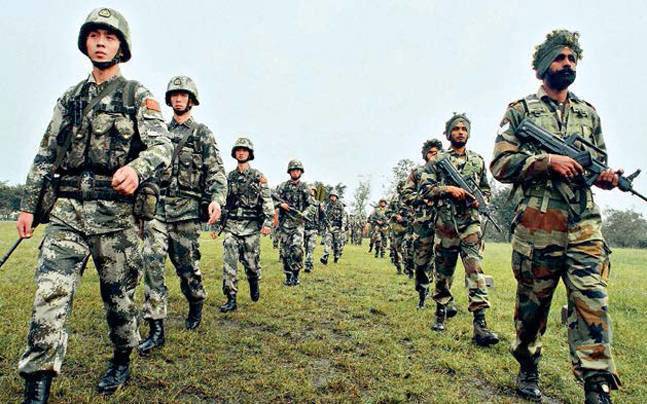By Surajkumar Thube
With talk of inviting ASEAN members for the upcoming Republic Day celebrations in India, New Delhi’s diplomatic overtures toward the Southeast Asian countries are increasingly clear. At the same time, with India set to look for greener pastures beyond South Asia, it’s hard to ignore the palpable fissures developing in the so-called “neighborhood-first” policy. The grand initiative to increase bonhomie with neighboring countries since 2014 has become hopelessly mired in episodic yet fundamental practical diplomatic hurdles. This anxiety can be sensed through recent developments, beginning with Nepal and Bangladesh.
The victory of the “left alliance” in Nepal has been seen as a failure of Indian diplomacy in the region since 2015. Former (and likely future) prime minister K.P. Oli’s frosty relations with the Indian government, especially during their intervention in the constitutional crisis and the five month economic blockade that followed, further intensified the already existing tension between the two countries. The left alliance is much closer to the Chinese, and especially intent on not relying on Indian investment — almost akin to King Gyanendra’s positive relationship with the Chinese authorities in 2005. Oli continues to evince a similar interest in opening up the economy in a big way to the Chinese.
Nepal is one existing unresolved issue; another issue concerning Bangladesh has the potential to spoil a relatively stable relationship. The Rohingya crisis has been conveniently ignored till date by both parties. However, both of them will be compelled to address the issue soon, especially with the first draft of the National Register of Citizens of Assam now on the negotiating table. The Indian government faces the dilemma of either fostering a peaceful domestic situation or protecting one of its few stable relationships with a neighbor. The possible Indian option of deportation can exacerbate this nervousness, as Bangladesh has been vocal recently in expressing their displeasure with India for not pressuring Myanmar to take back the refugees.
Apart from dealing directly with its neighbors, India has to deal with the overweening economic clout of China. Along with China’s continuing diplomatic heft across Asia, it has also significantly managed to increase its presence in the Indian Ocean. The recent China-Maldives Free Trade Agreement is a case in point. The covertness and the suddenness with which it was made public has irked the Indian establishment. Another development saw the handing over of Hambantota port in Sri Lanka to the Chinese state-run company, China Merchants Port Holdings. In its relationship with China, Sri Lanka has made it amply clear: Colombo is not relying entirely on economic assistance coming from India. In fact, there has been virtually no progress on India’s comprehensive economic partnership with Sri Lanka. India seems to have fallen back again as the Chinese FTA with Sri Lanka is underway.
The Chinese seem to be winning not just economically but also in the diplomatic race, especially when one takes into account the ambiguous position of Bhutan vis-a-vis the stationing of around 8,000 Chinese troops spread across the Chumbi valley. Bhutan, even while stating clearly their stable relationship with India, cannot afford to incense the Chinese, thus sidelining the immediate, tangible economic investment on offer. India-Bhutan relations, irrespective of the Chinese factor, have seen tensions develop in the recent past with Bhutan’s reluctance to give a green signal to the BBIN network over “environmental issues.” India has still not been able to convince Bhutan over the larger benefits of this initiative.

China and India have been engaged in a standoff in the Doka La area near the Bhutan tri-junctionsince June.
In Afghanistan, the country with which India has arguably the best relationship in the region, the economic investment in the Zerang-Delaram highway will not easily translate into political cooperation, let alone a geopolitical strategic partnership. Plus, Pakistan’s Gwadar port, propelled by the increasing consolidation of the China-Pakistan Economic Corridor, appears more commercially viable than Chabahar port in Iran, which is envisioned as a way to link India and Afghanistan’s trade. Meanwhile, India will struggle to make Afghanistan more politically stable. Iran, which is showing no real signs of supporting India on the geopolitical front, let alone dealing with the Afghan Taliban directly, will leave it to India to bridge this all important gap.
At the moment, the optimism surrounding the invitation to SAARC countries for Prime Minister Narendra Modi’s swearing-in ceremony in 2014 has petered out. Some of these developments are largely of India’s own doing, while the rest emanate from a rapidly rising China. In either case, India has to re-imagine its neighborhood policy afresh.
Surajkumar Thube recently completed his post graduate work in Political Science from Jamia Millia Islamia, New Delhi. He has previously contributed to India Today’s DailyO, Countercurrents, Raiot, The Hoot and The Book Review magazine.
PIC: MEA India

Leave your comments
Login to post a comment
Post comment as a guest